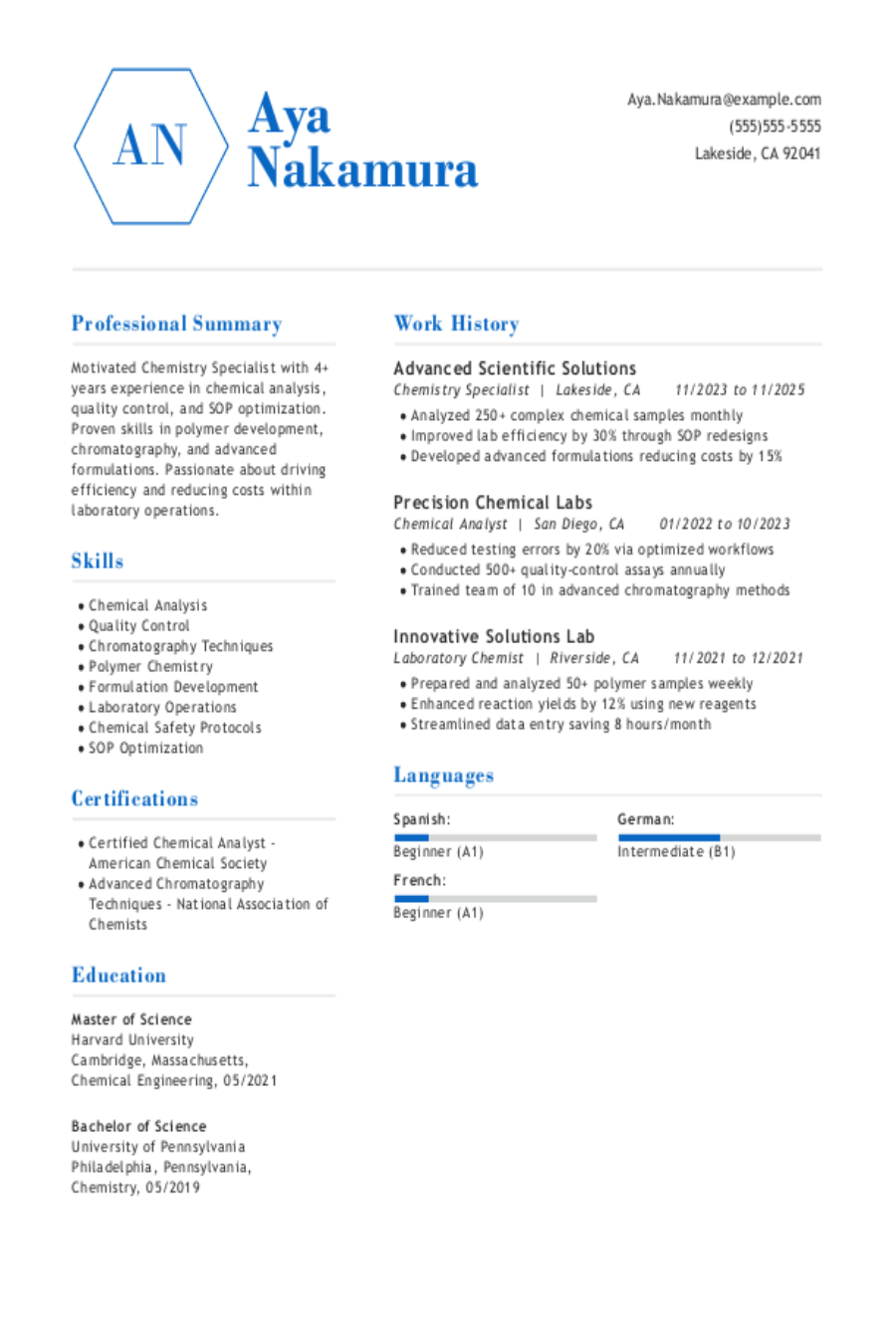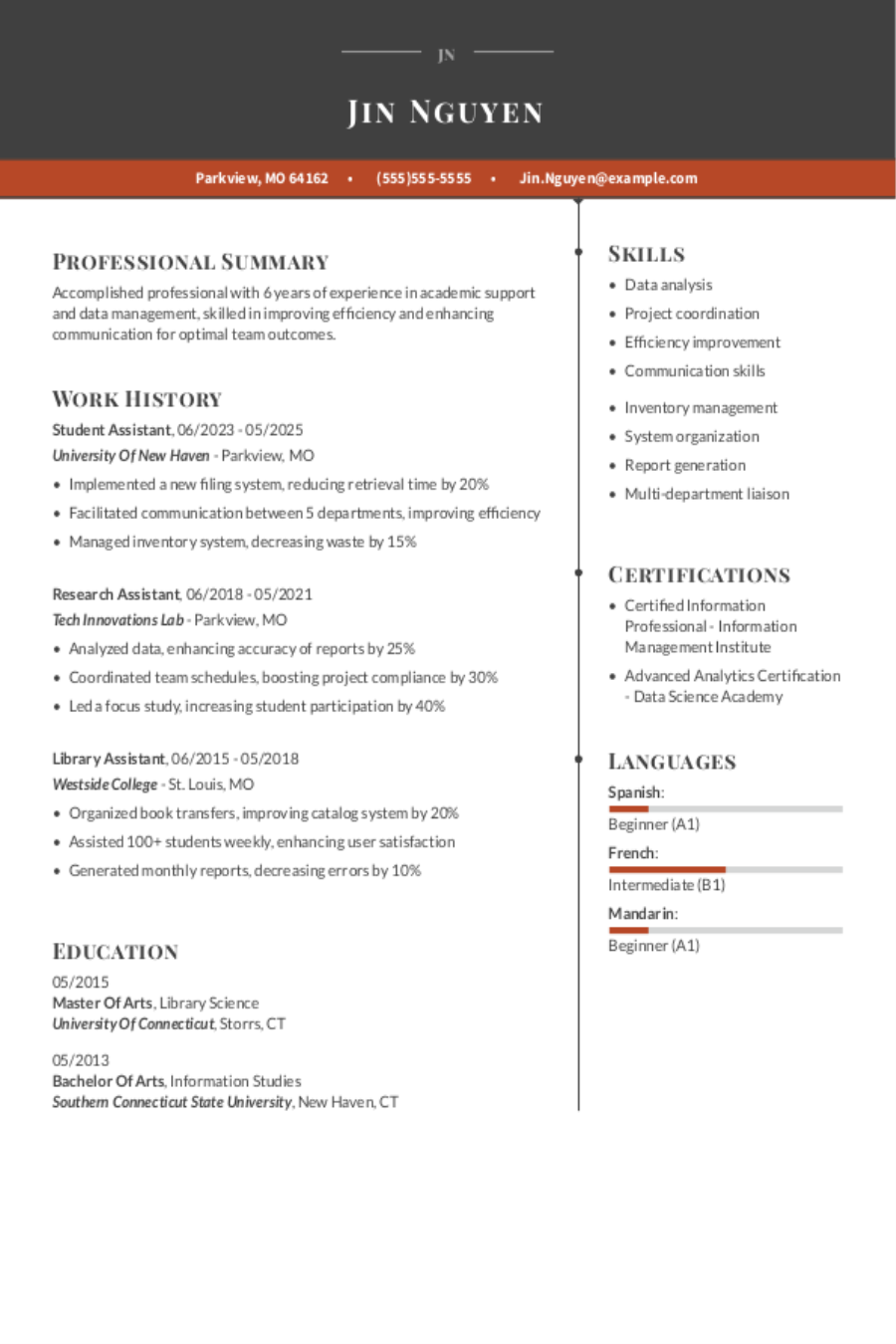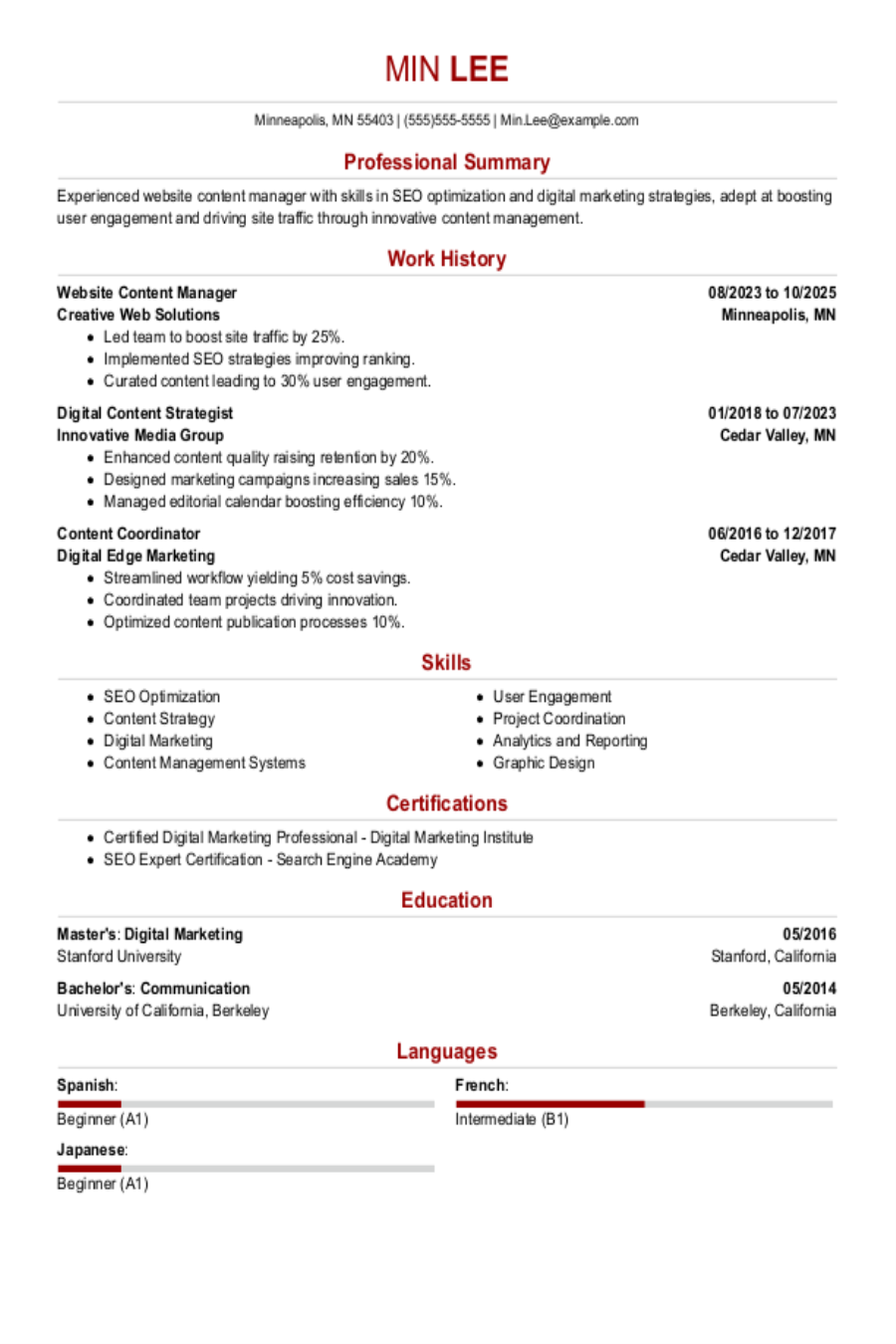Landing your dream job starts with a great CV.
But crafting a CV isn't a cakewalk. To help you, we've collected some of the best CV examples out there, covering a huge variety of careers.
Let these examples guide you as youwrite a CVfor your next role.
Top CV Examples for 2025
CV Examples by Job Title and Industry
Accounting CV examples (9)
Are you great at balancing ledgers and preparing tax returns? Our curriculum vitae samples will help you showcase your skills.
Administrative CV examples (9)
Our administrative CV examples will help you emphasize your skills to get an employer's attention.
Billing CV sample (1)
If you're a patient, critical thinker with a mastery of numbers, this CV example will help you create a job-winning doc.
Business operations CV example (9)
Learn the best way to emphasize your management experience with our business operations curriculum vitae sample.
Childcare CV example (2)
Compassion and patience are some of the tools of your trade, and this CV sample will show you how to make your expertise shine.
Computer software CV samples (3)
Our example CVs will help you highlight your ability to solve problems, write code and collaborate across teams.
Cosmetology CV examples (1)
Whether you're working for a salon or self-employed, our cosmetology samples will help you project confidence.
Customer service CV sample (2)
Customer service workers look to our CV sample for guidance on how to portray their soft and technical skills.
Data and systems administration CV examples (3)
Show off your top-notch training and exceptional skills on your CV, using our examples for instant inspiration.
Education CV examples (4)
Educators play a critical role in society, and anyone working in the field deserves an impressive curriculum vitae.
Food service CV samples (3)
In food service, let employers know that you're as well-versed in the kitchen as you are on the floor with a strong CV.
Healthcare CV examples (5)
Our healthcare CV samples will give your knowledge of medical procedures the attention they deserve.
Hospitality CV example (5)
Showcase your skills and experience in the hospitality industry by using a professionally reviewed CV as your model.
Human resources CV examples (15)
As companies invest in HR, be ready to update your curriculum vitae using our array of detailed samples for HR professionals.
Information technology (IT) CV sample (5)
When you're looking for your next IT job, let an example show you how to quantify your achievements and stand out.
Marketing CV examples (15)
You've got what it takes to excel as a marketer, but the competition is fierce. Our marketing examples can help you.
Media and communications CV samples (2)
Writing a CV is just another form of storytelling. Our curriculum vitae samples will help you tell a compelling one.
Medical CV samples (20)
Whether you're an experienced medic or a new resident doctor, our sample CVs will better your chances of getting an interview.
Nursing CV examples (30)
Nursing is a competitive field, so you need an impressive CV that can help you go straight to the top of the list.
- Nursing CNA
- Emergency Room Nurse
- Family Nurse Practitioner
- Geriatric Nurse
- Hospice Nurse
- Interventional Radiology Nurse
- Labor And Delivery Nurse
- Legal Nurse Consultant
- Licensed Practical Nurse
- Medical Surgery Nurse
- Neonatal Intensive Care Nurse
- New Grad Nurse
- Clinical Nurse Manager
- Nurse Midwife
- Nurse Practitioner
- House Supervisor Nurse
- Nursing Student
- Occupational Health Nurse
- Oncology Nurse
- Cardiovascular Operating Room Nurse
- Pediatric Nurse Practitioner
- Pediatric Nurse
- Perioperative Nurse
- Post Anesthesia Nurse
- Progressive Care Nurse
- Registered Nurse
- Registered Nurse Unit Manager
- School Nurse
- Travel Nurse
- Utilization Review Manager
Production CV examples (7)
Emphasize your knowledge, experience and skills properly when you use a curriculum vitae sample as your guide.
Safety and security CV example (3)
Our CV sample for safety and security professionals will help you show employers you have what it takes to do the job.
Sales CV example (14)
Your CV is one of the most important sales pitches you'll ever create. This curriculum vitae example will help you close the deal.
Social services CV sample (8)
Your social services CV should shine the light on your empathy and clear thinking. Let our samples show you how.
Sports CV example (2)
Whether you're a high-school coach or a high-ranking athlete, our curriculum vitae example will help you land more interviews.
Job Seekers Love Our CV Examples
CV Samples by Career Level
Examples of CV Formats
What are CV formats and why do they matter? They determine how your CV is organized.
Should skills be highlighted above professional experience? Where should the education section be placed? Each format speaks to these questions.
Now, let's see some examples.
Simple CVs
Use a simple CV template if you're applying for a job in a formal field like finance or law, where being clear and professional is most important.
Functional CV format
If you're just starting your career or changing to a new field, a functional CV, which focuses on your skills, might work well for you.
Combination CV format
If you're midcareer and have important skills you want to highlight, a combination CV can be really useful.
CV Samples by Template
Choose a CV template that suits your industry, as each career path has its own preferences.
Look through these popular CV templates to find the right one for you.
Simple CVs
Use a simple CV template if you're applying for a job in a formal field like finance or law, where being clear and professional is most important.
Creative CVs
Think about picking a creative CV template if you work in design, advertising, or any job where your unique style and creativity can make you stand out.
Modern CVs
Choose a modern CV template if you're targeting a job at a forward-thinking company or in a field that values modern looks and trends, like tech startups or marketing firms.
What Goes in a CV
All CVs will include the following essential sections:
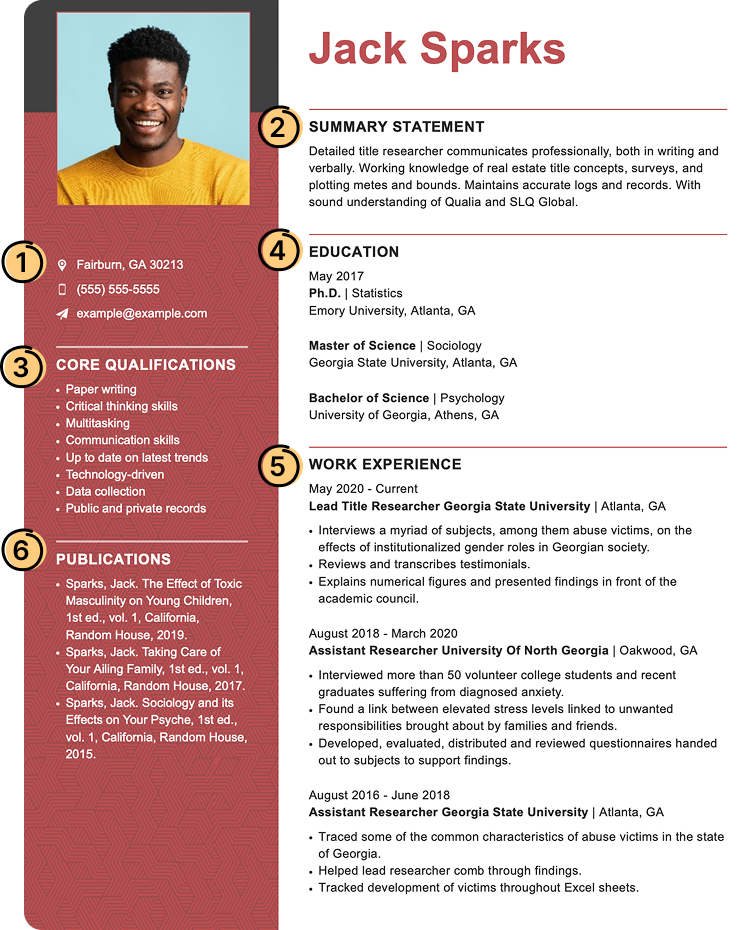
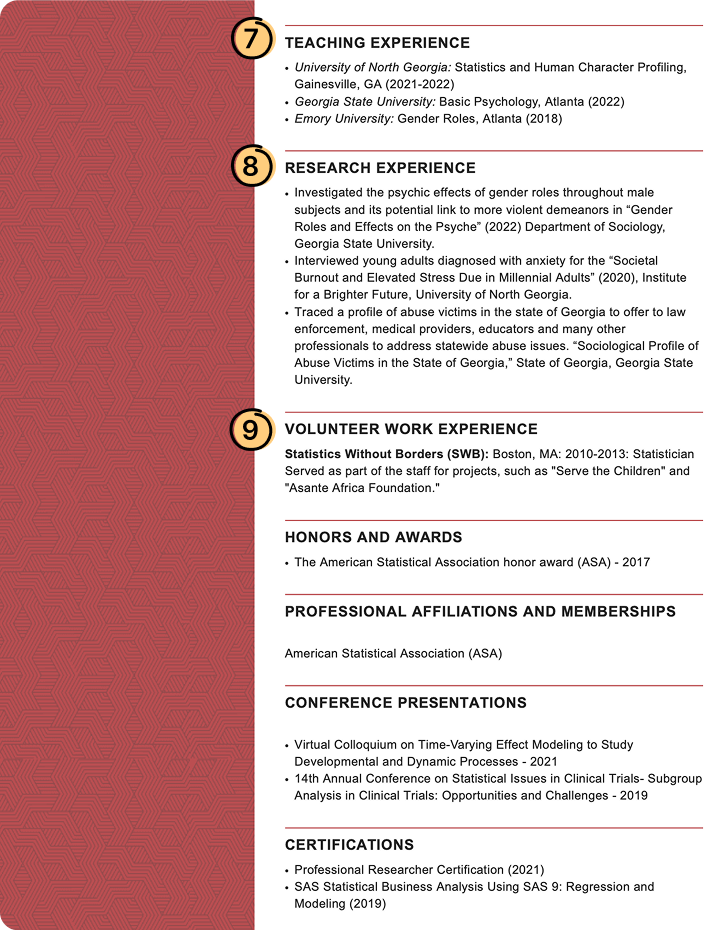
- Contact details
Your CV must include your name, location, phone number and email address, normally at the top of the CV.
- Professional summary
This short paragraph introduces you to employers while highlighting your most significant qualifications.
- Skills
Include a mix of your most relevant hard and soft skills. Pull skills from the job description for a better chance of beating the applicant tracking system (ATS).
- Education
Add the schools you attended, their locations and the dates you were there. No need to include high school unless it's your highest level of education.
- Work history
Write a reverse-chronological account of your job history , spotlighting key accomplishments along the way.
- Publication
Highlight published or pending theses, dissertations, articles, reviews, research or books.
- Teaching experience
Anyone with experience teaching topics that pertain to their work should add this section to their CV.
- Research experience
Insert research projects to showcase skills and knowledge relevant to a future employer.
- Honors and awards
An awards section is a great way to show significant achievements, but only mention accolades that pertain to the job.
CV Examples FAQ
The following steps outline how to make a CV:
- Pick a CV example that matches your industry and job title.
- Follow our tips for how to write a CV.
- Choose a CV template appropriate for your industry and goals.
- Use our CV Maker to create your custom CV.
- Download your file, save it and send it along with a cover letter.
Yes, these are among the best CV examples for 2025. How do we know? Our CVs are written in professional CV designs approved by recruiters, produced by experts and reviewed by Certified Professional Resume Writers (CPRW) before we post them on the site. The reviewers are knowledgeable in CV best practices, and when necessary, they conduct in-depth subject area research to ensure the examples are accurate.
Yes! Resume Now's CVs are created by experts who know applicant tracking systems (ATS) pick CVs based on keywords and that they can only read CVs designed and formatted according to specific requirements. That's why our CV examples and templates use standard fonts, margins and colors and incorporate clean layouts that are easy for ATS to scan.
Yes, you can add hobbies and interests cautiously. Only add hobbies and interests that are relevant to the job. For example, if you're applying for a job at a hospital, you can mention that you teach yoga classes in the park every weekend. On the other hand, there's no reason to mention that you're an avid stamp collector. Including irrelevant interests might make you appear unprofessional.
While CVs are longer and more detailed than resumes, you don't want to tell your life story. Here are a handful of items you should leave off your CV in most cases:
- Age.
- Birth place.
- Religious affiliations.
- Sexual orientation.
- Ethnic identity.
- Weight and height.
- Marital status.
- Irrelevant hobbies.
- Unprofessional email address.
Ultimately, you want to keep your CV focused on professional accomplishments. Including unnecessary personal details could be a distraction.
Here's how to write a good CV step by step:
- Choose a professional template appropriate for your industry.
- Add your contact info in the header (name, phone number and email address).
- List your entire academic history, from high school to postdoctoral. Mention degrees you earned, fields of study and relevant coursework.
- Create a three- to four-sentence summary that encapsulates your career.
- Recount your professional experience, beginning with your most recent job and working backward. Highlight quantifiable achievements in bullet points under each job.
- Showcase your most relevant qualifications and skills, including technical skills, computer skills and soft skills (like communication and leadership).
- Devote a section to honors and awards. Include the award name, the year you received it and the organization that awarded it to you.
- Touch on key publications and presentations you've delivered that are relevant to your field.
- Complete your CV with additional sections depending on your industry. Possible additions are certifications, grants/scholarships, volunteer work, foreign languages and professional memberships.
- Make sure to proofread your CV before you submit it.
The most common CV format is reverse-chronological, which begins with your most recent experience and works backward. Since CVs are primarily used in highly specialized career fields, a proper format will lead with academic history, starting with the most recent degree.
If you're looking for formatting tips, spacing, font size and more, you'll find solid advice in our resume formatting guide.
Yes. Getting a CV done professionally is worth it if you have the money.
There are many reasons to hire a professional. First, writers have honed their craft for years, making them better prepared to create compelling content that's grammatically flawless. Second, CV writers know how to craft a CV that will pass through an employer's applicant tracking system (ATS), which is designed to screen out unqualified applicants.
Finally, thanks to their experience, CV writers know what works, whether crafting bullet points to highlight measurable achievements or the proper way to format a list of publications.
Employers in the U.S. don't have a strict rule on how long CVs should be. While two or three pages is the average length, it's not uncommon to get a CV that's four or five pages long.
Resumes are typically shorter. A well-written resume will run for one or two pages. That's why it's important to be concise in every section of your resume, including the summary, objective statement, work history and professional skills. Using an online AI resume builder can help you tighten the language and cut your resume to the ideal length.
Whether or not you include a photo depends on where the employer is located. In the U.S., we advise against including a photo unless you apply for a position in a creative industry where headshots are common (e.g., theater, modeling and acting).
Throughout much of Europe and Asia, however, including a photo with your CV is common practice. Ultimately, you should do whatever is the norm in your employer's country.
Yes! Always write a cover letter to complement your application, no matter how detailed your CV is. It is a great way to introduce yourself to a prospective employer and express your personality. Moreover, a cover letter can help you stand out from the competition because it allows you to convey your enthusiasm for the job and tell the hiring manager why you want to work for them.
We recommend using a professional cover letter template, ideally with the same design you used for your CV. You can find templates in a cover letter generator, which will also provide job-specific language to get you started. If you're feeling stuck, browse our library of cover letter examples for inspiration.

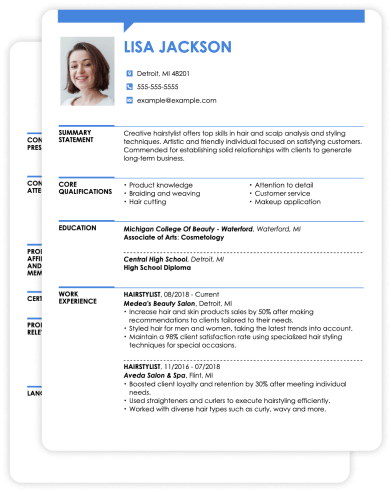

![People Skills for Your Resume [Synonyms and 20+ Examples] People Skills for Your Resume [Synonyms and 20+ Examples]](/sapp/uploads/2024/04/people-skills-for-your-resume.png)

